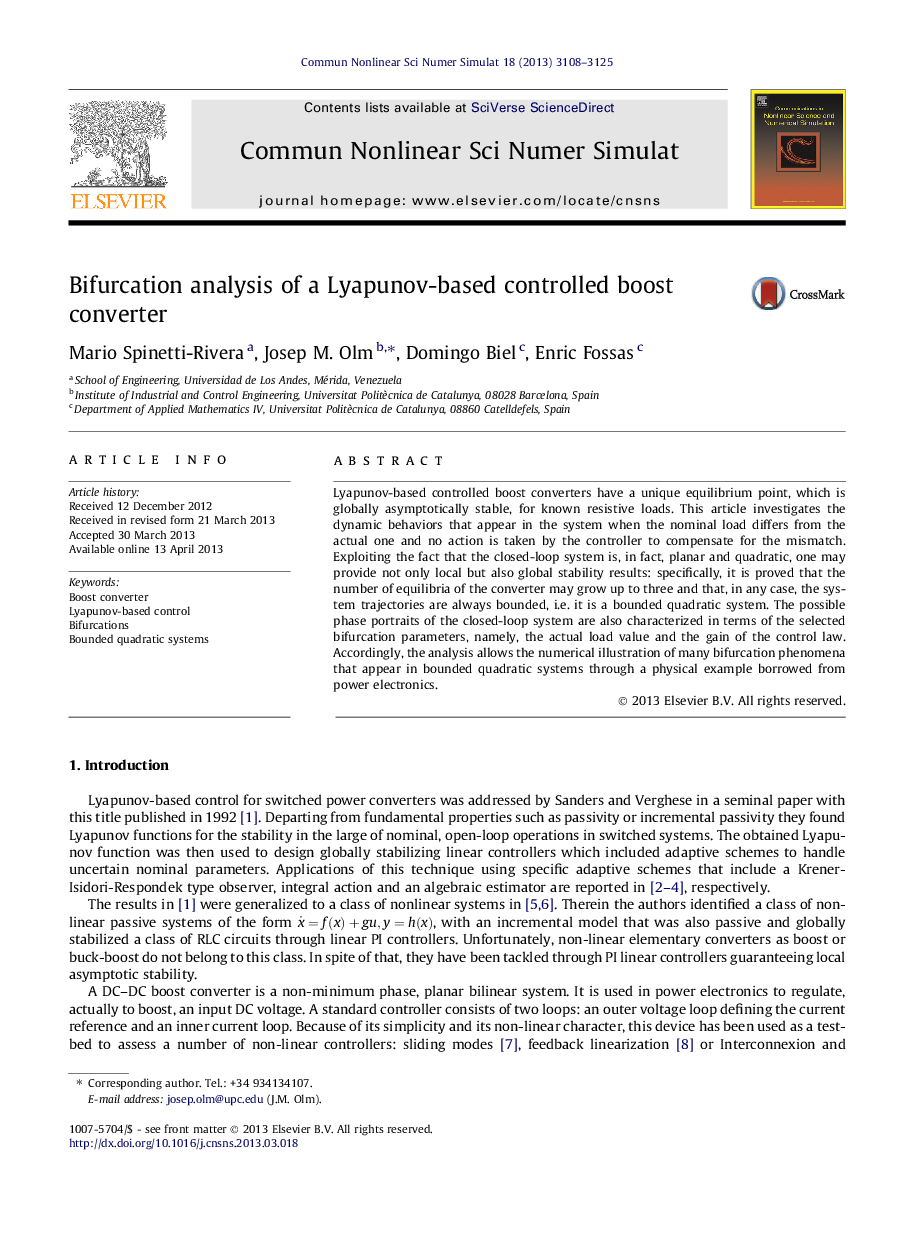| Article ID | Journal | Published Year | Pages | File Type |
|---|---|---|---|---|
| 758492 | Communications in Nonlinear Science and Numerical Simulation | 2013 | 18 Pages |
•We study the behavior of a Lyapunov-based boost converter.•We prove that the closed-loop system is a bounded quadratic system.•We show that the original equilibrium may bifurcate into two or three.•We characterize the possible phase portraits in terms of the bifurcation parameters.•Realistic numerical results support the theoretical analysis.
Lyapunov-based controlled boost converters have a unique equilibrium point, which is globally asymptotically stable, for known resistive loads. This article investigates the dynamic behaviors that appear in the system when the nominal load differs from the actual one and no action is taken by the controller to compensate for the mismatch. Exploiting the fact that the closed-loop system is, in fact, planar and quadratic, one may provide not only local but also global stability results: specifically, it is proved that the number of equilibria of the converter may grow up to three and that, in any case, the system trajectories are always bounded, i.e. it is a bounded quadratic system. The possible phase portraits of the closed-loop system are also characterized in terms of the selected bifurcation parameters, namely, the actual load value and the gain of the control law. Accordingly, the analysis allows the numerical illustration of many bifurcation phenomena that appear in bounded quadratic systems through a physical example borrowed from power electronics.
